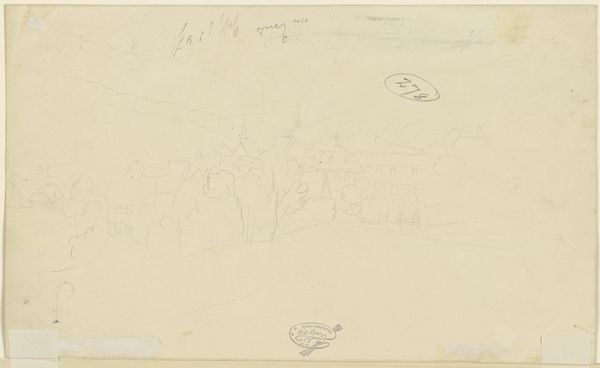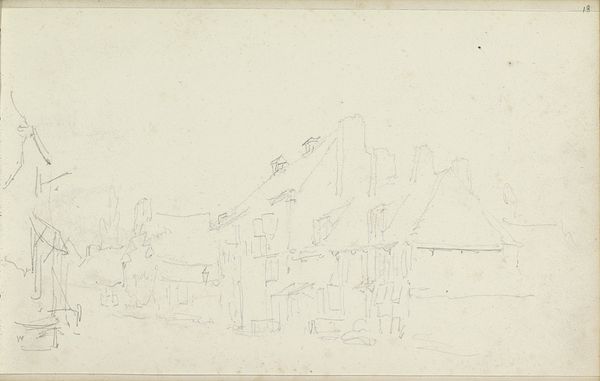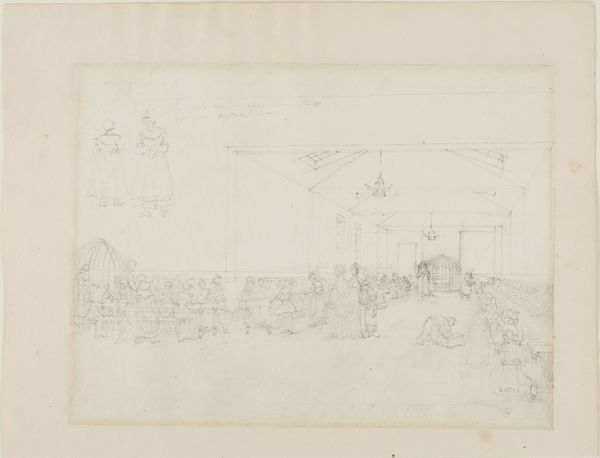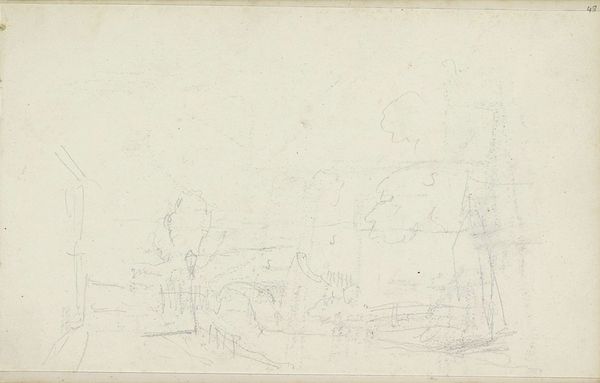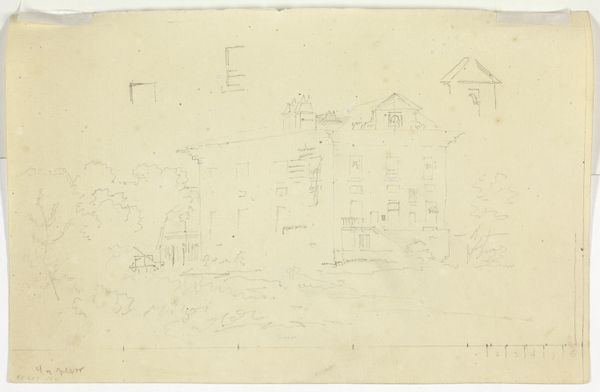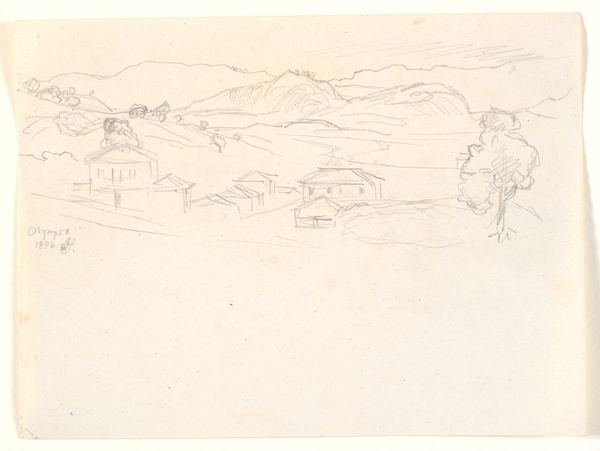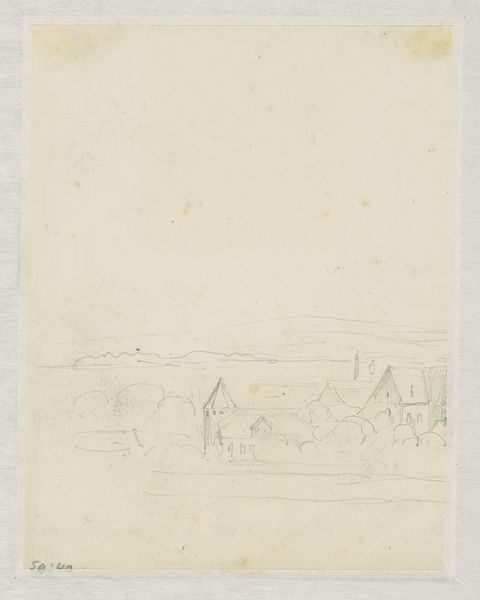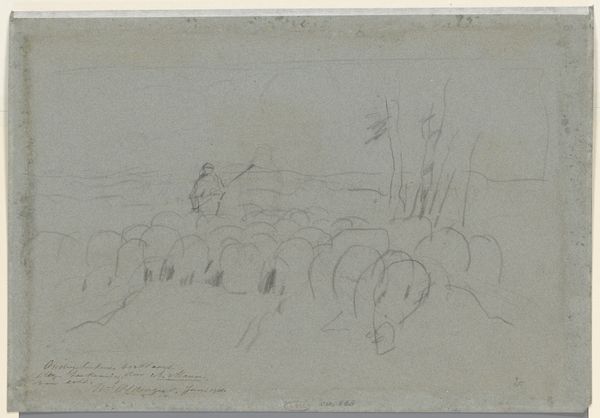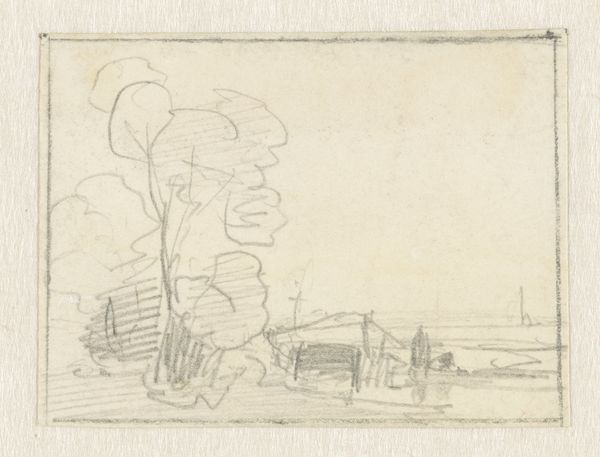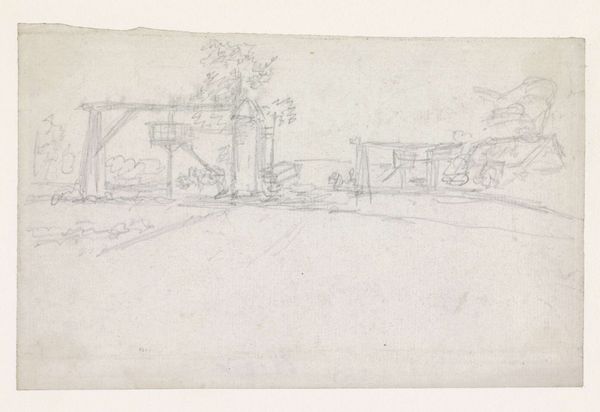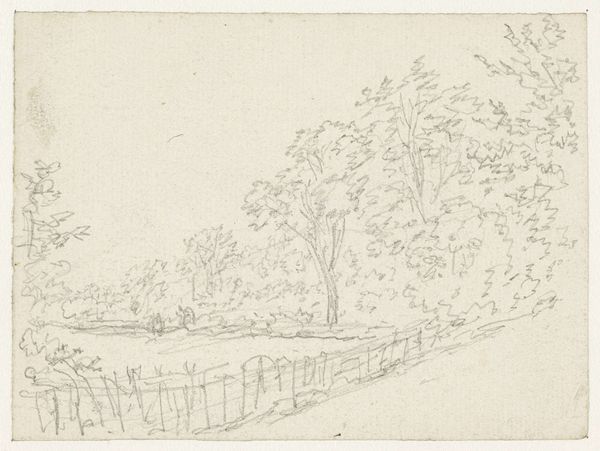
drawing, pencil
#
drawing
#
landscape
#
pencil
#
orientalism
Dimensions: height 78 mm, width 175 mm
Copyright: Rijks Museum: Open Domain
Curator: Welcome. Today, we are examining Jan Brandes' pencil drawing, "Oosterse tuin met pagode," created sometime between 1779 and 1785. Editor: It's incredibly delicate, almost dreamlike. The faint lines give it a sense of distance, as if glimpsed through a haze. Curator: Indeed. Brandes, known for his travels and depictions of non-Western cultures, particularly the East Indies, often employed drawings as preparatory studies for more elaborate works, or as keepsakes themselves. Look at the economy of line—primarily pencil on paper—yet suggesting depth and form. The work encapsulates both Brandes’ draftsmanship and European fascination with oriental motifs. Editor: The pagoda, of course, becomes the focal point, doesn't it? Notice its recurring presence—its echo—across various cultural and historical contexts as a symbol of the exotic Other. This iteration reminds me specifically of the architectural fantasies popular in Europe during that era. There's a constructed nature to this "Oriental garden", almost theatrical. Curator: Absolutely, and that construction tells us much about colonial perceptions. Note the lone figure walking toward the pagoda, framed by trees, subtly emphasizing a constructed landscape made accessible, navigable. And consider, too, that paper was a globally traded material in the 18th century; here its usage enables a very portable image of "the Orient." The social and economic mechanisms enabling artmaking are always central. Editor: Right. It makes me ponder, also, the symbolic power held in these gardens. Even their arrangement--the careful placement of each element--reflects deliberate intention, laden with emotional meaning. Here we have a place set apart, possibly of tranquility, also otherness. Curator: An "otherness" packaged for European consumption. The means of creating and disseminating this imagery also informed its reception. Editor: A captivating dance of form and history. Curator: Indeed. And I hope that we’ve offered some food for thought.
Comments
No comments
Be the first to comment and join the conversation on the ultimate creative platform.
